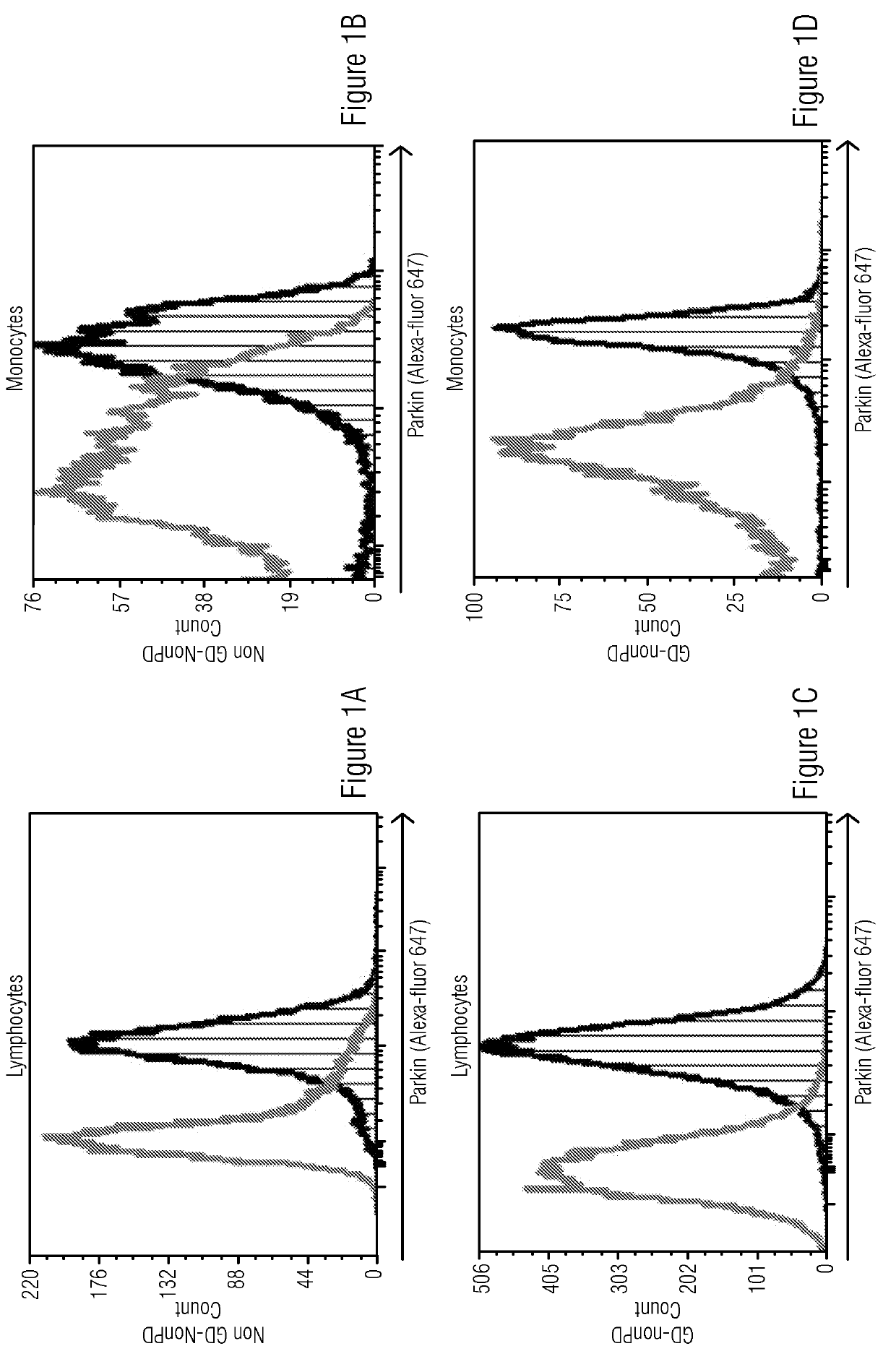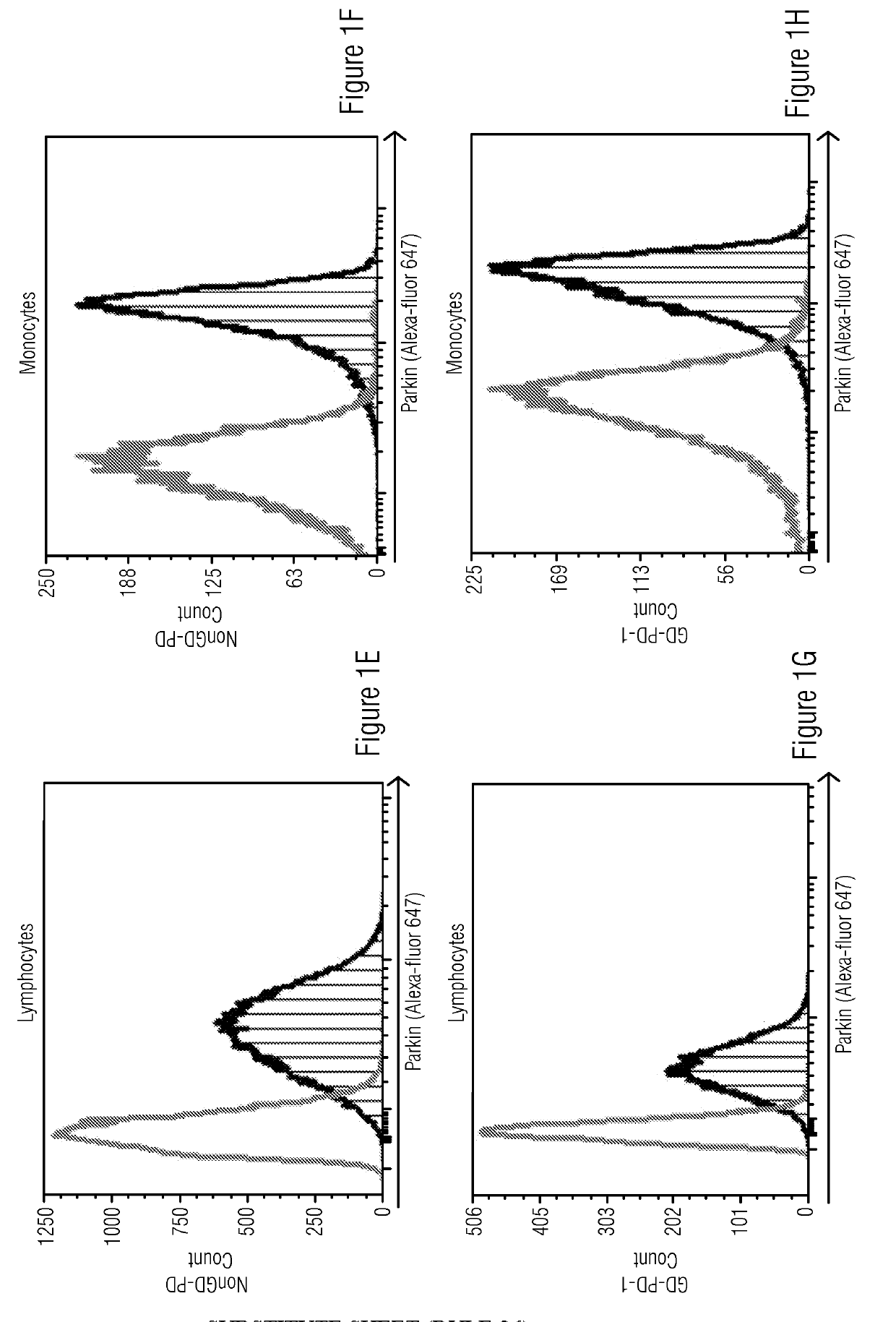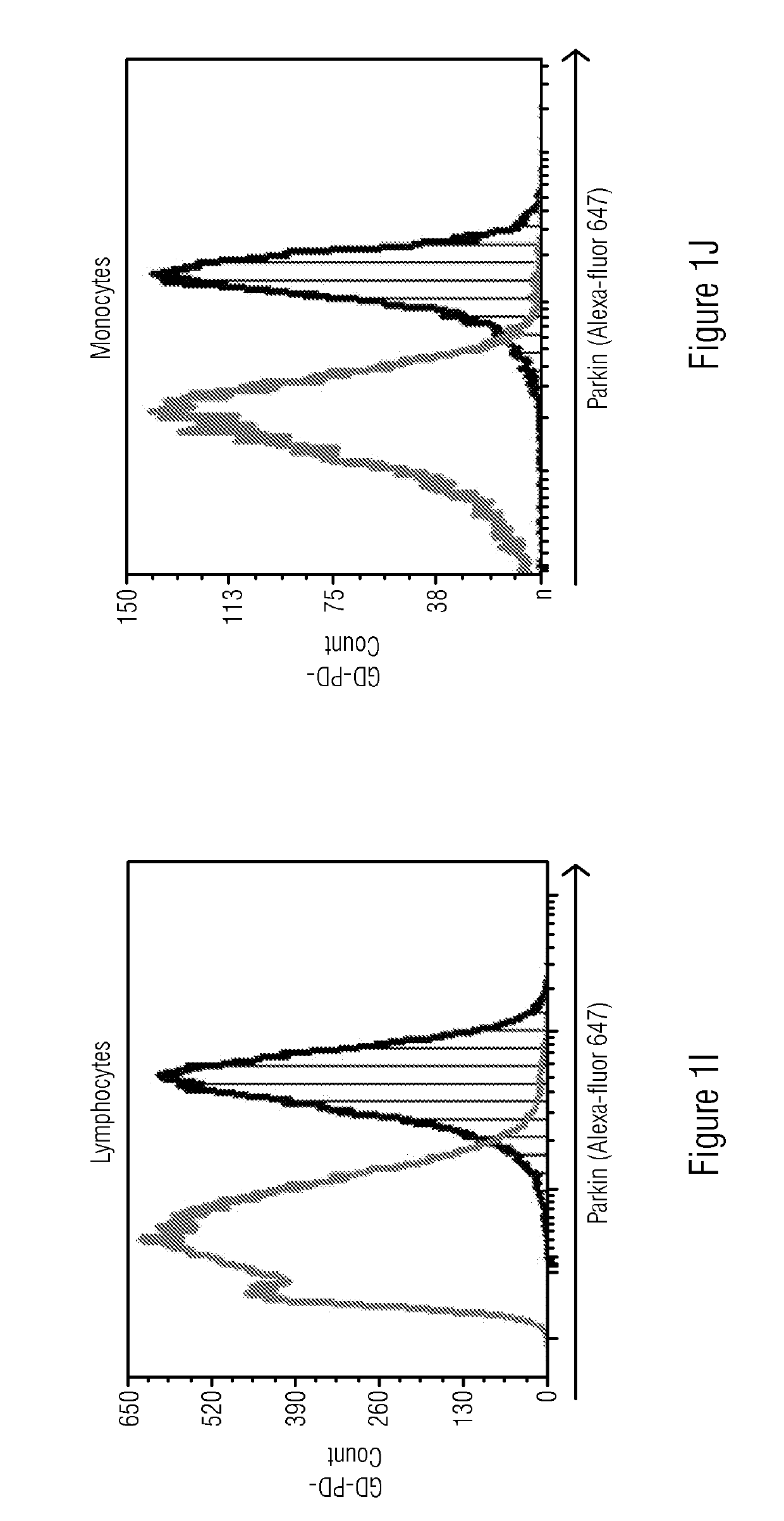Alpha-synuclein in peripheral blood mononuclear cells as biomarker for synucleinopathy
a synucleinopathy technology, applied in the field of peripheral blood mononuclear cell alpha-synuclein as biomarker of synucleinopathy, can solve the problems of no biomarkers to determine, no specificity nor sensitive signs, and currently accepted clinical criteria for the diagnosis of pd generally have poor specificity for identifying other parkinsonian syndromes. , the effect of less invasiveness and rapid diagnosis
- Summary
- Abstract
- Description
- Claims
- Application Information
AI Technical Summary
Benefits of technology
Problems solved by technology
Method used
Image
Examples
example 1
Subjects
[0050]Study included four cohorts: 1) Patients and carriers of Gaucher disease with confirmed disease causing mutations in GBA gene who have developed Parkinson disease symptoms (GD-PD), 2) Patients and carriers of Gaucher disease with no known Parkinson disease symptoms (GD-nonPD), 3) Patients with diagnosed Parkinson disease and no known GBA mutation or GD symptoms (nonGD-PD) and 4) Subjects with no known PD or GD symptoms (NonGD-nonPD).
example 2
Isolation of Peripheral Blood Mononuclear Cells (PBMCs)
[0051]PBMCs are extracted from 3-5 ml peripheral blood using Ficoll-paque (GE health care). 2-4 ml of whole blood is diluted 1:2 using Phosphate buffered saline (PBS) containing 2% fetal bovine serum (FBS) and overlayed onto Ficoll solution in 15 ml leucosep tube. The tubes are centrifuged at 2000RCF for 10 minutes with no brakes. The layer containing PBMCs is transferred into a fresh 15 ml tube and washed with PBS+2% FBS. The cells are then resuspended in cell freezing medium (50% RPMI+40% FBS+10% DMSO) and stored at −150° C. in a freezer until their use.
example 3
[0052]The cryopreserved PBMCs were thawed at 37° C. for 2 minutes, washed and resuspended in PBS+2% FBS and used for immunostaining. Approximately 5×105 cells per tube were fixed and permeabilized using Fix & Perm Cell Fixation and Cell Permeabilization kit (Thermo Fisher Scientific) as per manufacturer's instructions. Rabbit anti-human-Alpha-Synuclein and Rabbit-anti-human-Parkin antibodies (catalog numbers 701085 and PA5-13399 respectively, from Thermo Fisher Scientific) were added to individual tubes for intracellular staining for 20 minutes at room temperature. No primary antibody was added to the control tubes. The cells were then washed with 2 ml of PBS+2% FBS. The tubes were centrifuged to remove wash buffer. The cells were resuspended in PBS+2% FBS containing Goat anti-Rabbit antibody conjugated with Alexa fluor 647 which acted as secondary antibody and incubated at room temperature for 20 minutes. The cells were then washed in PBS+2% FBS and acquired on Flow c...
PUM
| Property | Measurement | Unit |
|---|---|---|
| Ratio | aaaaa | aaaaa |
| Level | aaaaa | aaaaa |
Abstract
Description
Claims
Application Information
 Login to View More
Login to View More - R&D
- Intellectual Property
- Life Sciences
- Materials
- Tech Scout
- Unparalleled Data Quality
- Higher Quality Content
- 60% Fewer Hallucinations
Browse by: Latest US Patents, China's latest patents, Technical Efficacy Thesaurus, Application Domain, Technology Topic, Popular Technical Reports.
© 2025 PatSnap. All rights reserved.Legal|Privacy policy|Modern Slavery Act Transparency Statement|Sitemap|About US| Contact US: help@patsnap.com



